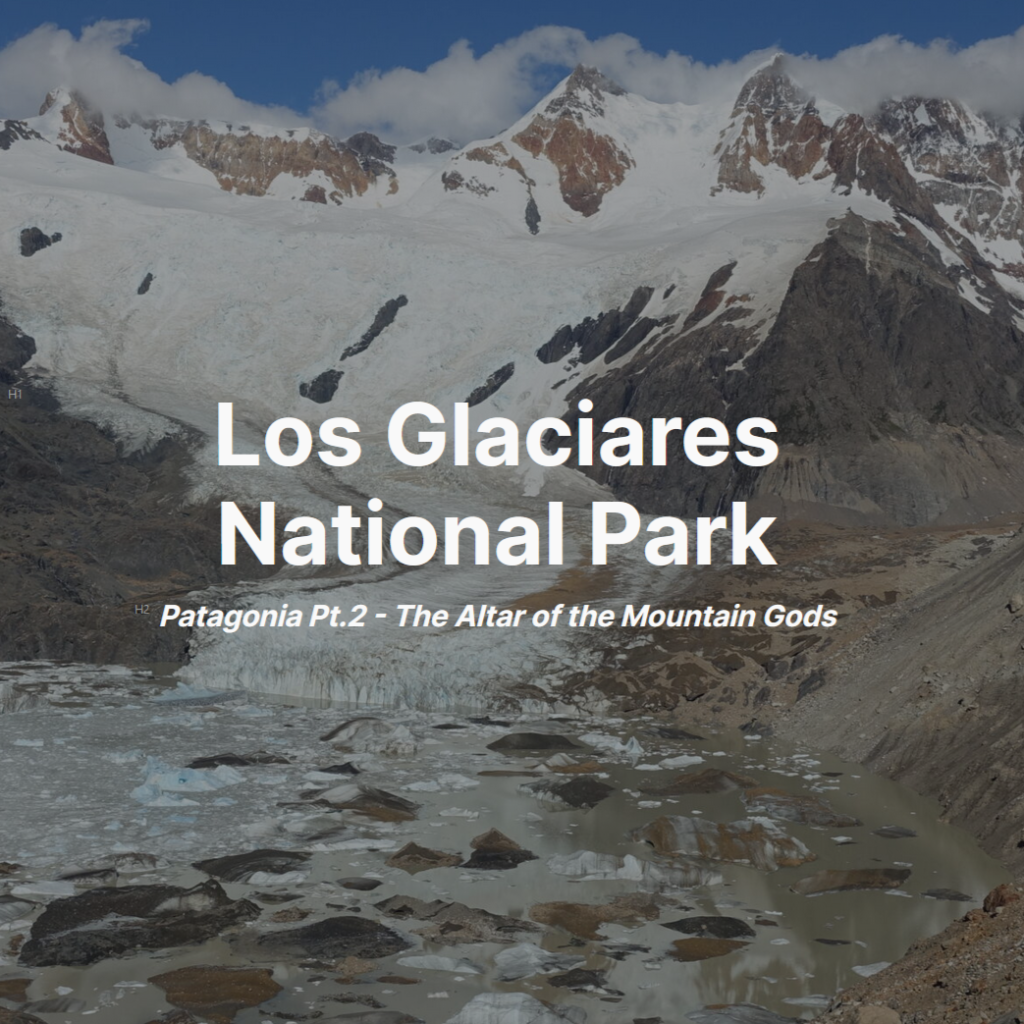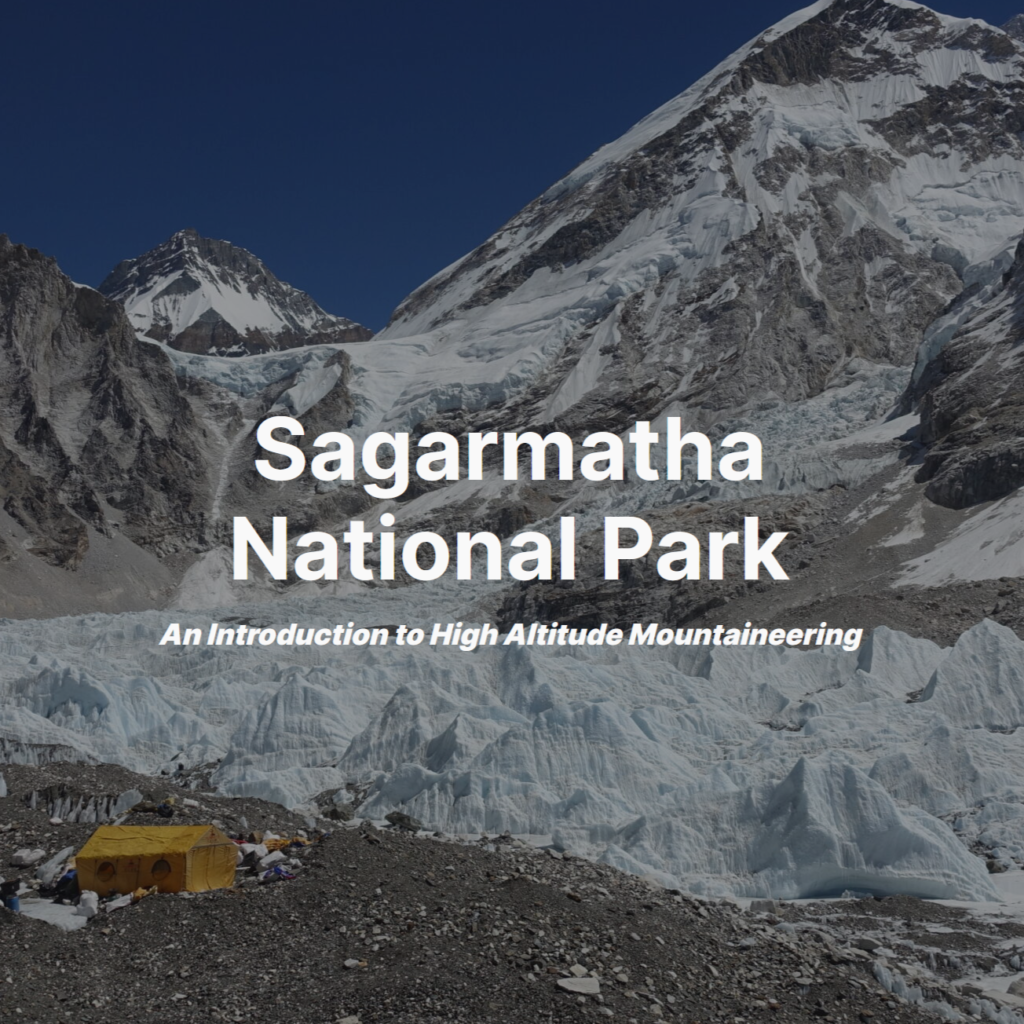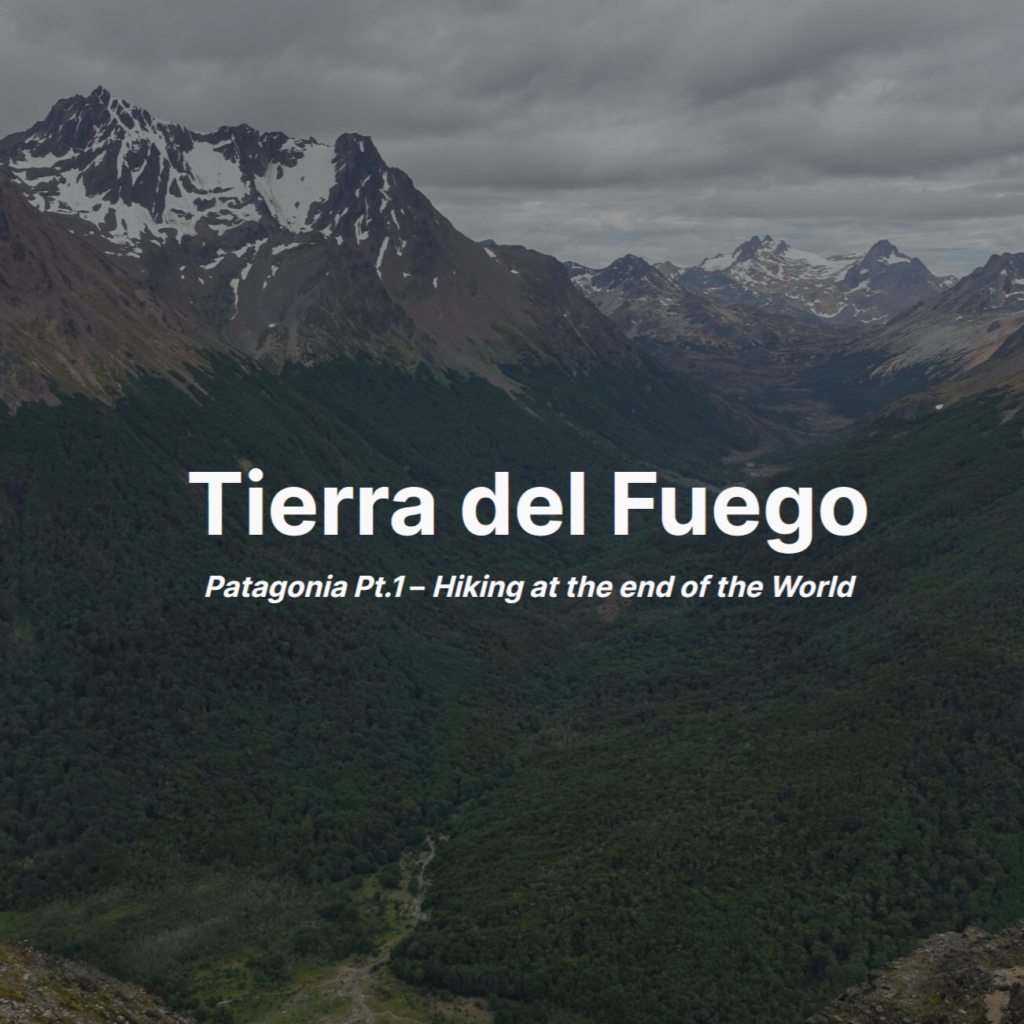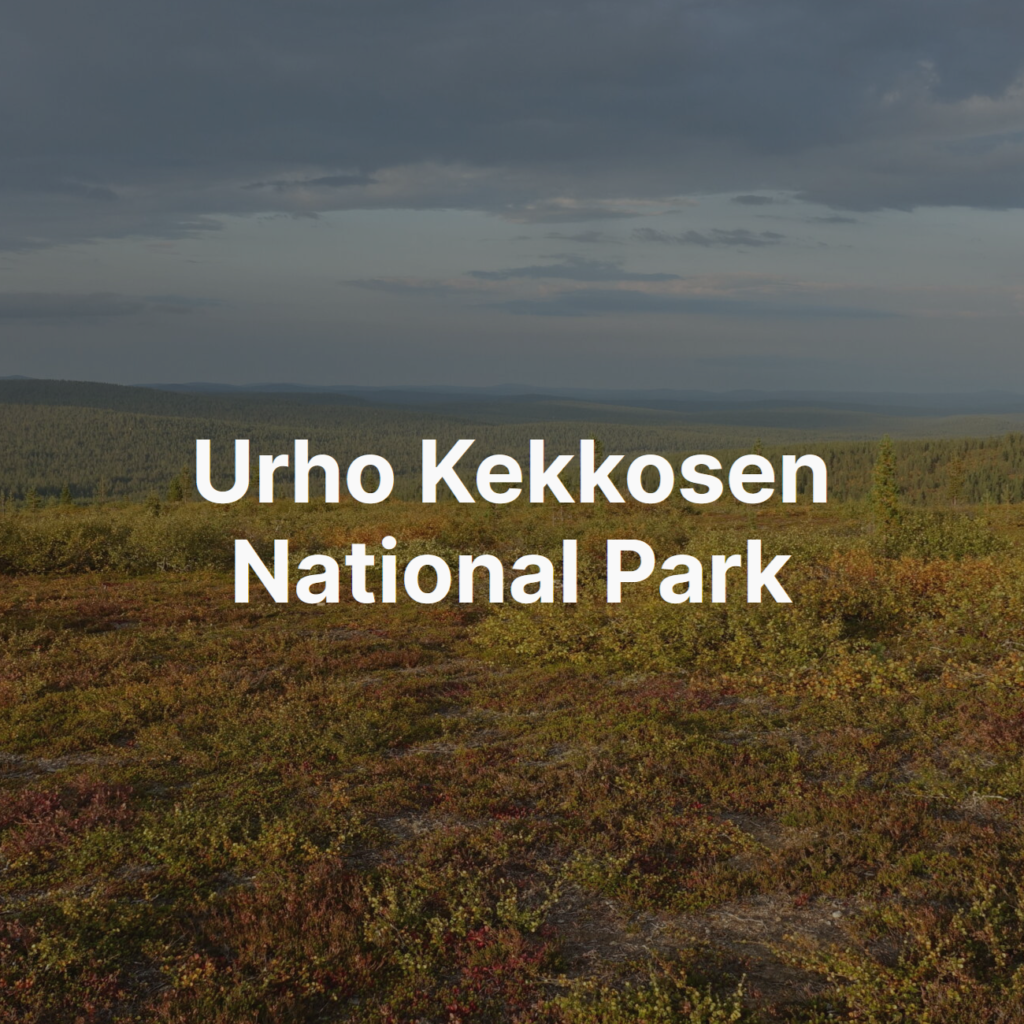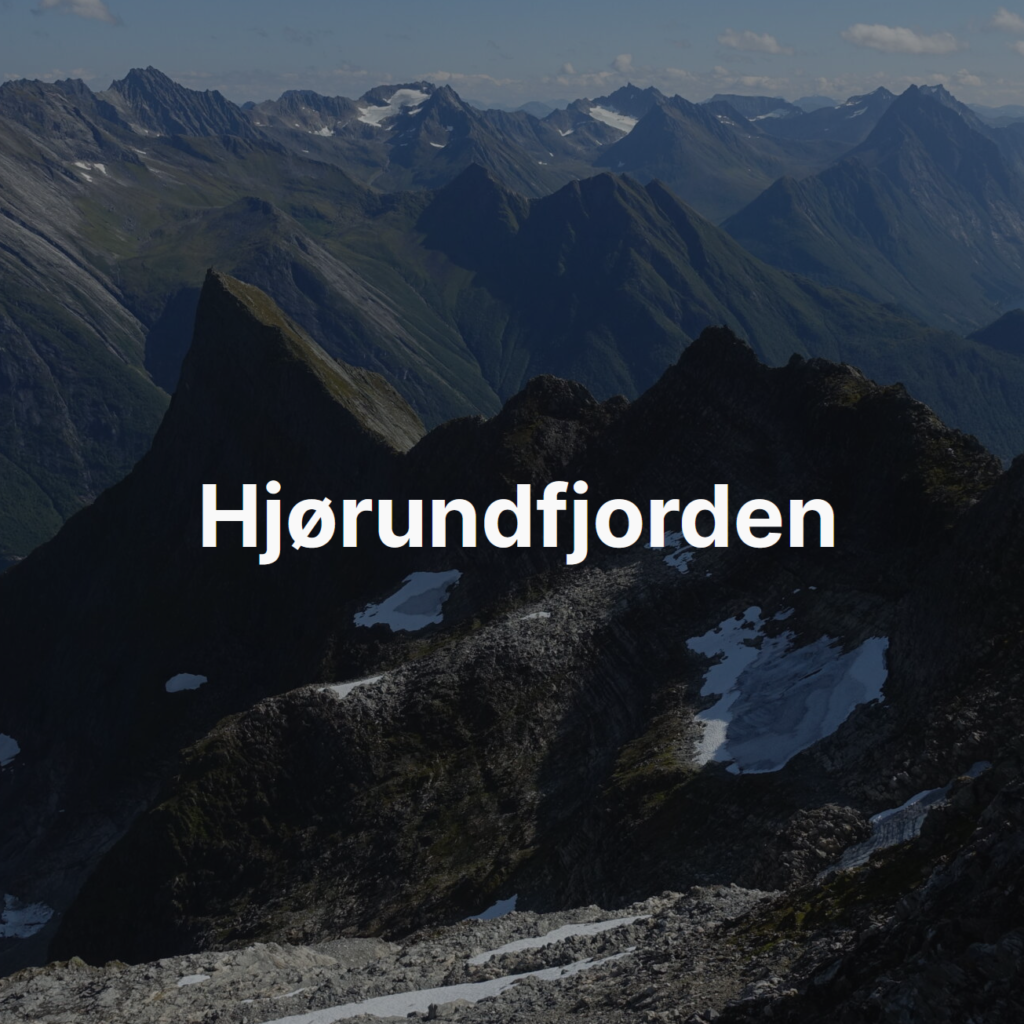
Los Glaciares National Park
Patagonia Pt.2 – The Altar of the Mountain Gods
Introduction
25 December 2024 – 10 January 2025
Part 2 of the Patagonia 2024 trip. Begin with Part 1: Tierra del Fuego.
For the 2024 holiday season’s trip with my mum, there was really only one region on the radar. Patagonia has long been a high-priority travel target. Due to the long travel times required, it had always been passed over in favour of more convenient options. Patagonia is a massive region, spanning two countries, and has a lot to offer in both. Within these regions, there are three obvious areas to start: Torres del Paine National Park in Última Esperanza (Chile), Los Glaciares National Park in Santa Cruz (Argentina), and Ushuaia in Tierra del Fuego (Argentina). Whilst it is possible to transit between Argentinian and Chilean Patagonia, it is not very practical – we would need to be chose one.
For me, Los Glaciares was always going to be the top priority. The Huemul Circuit was a big draw, and the scrambling options around Fitz Roy just made it all the more appealing. Since we landed on Argentina rather than Chile, it only made sense to add a stop at Ushuaia.
My mum had a difficult year. In the weeks leading up to the trip it was touch and go whether she should join. Ultimately, she decided against it – I would be going solo.
The day before departure I learned that Argentina shadow-dropped a fun new pricing structure for their national parks. I strongly regretted the fact that I would soon be indulging this extortion. Everyone should have access to the outdoors and national park entrance fees are rarely justified. The extent of Argentina’s cash grab is particularly repulsive though. Fortunately, I still have more than a few student cards without expiration dates…
Arrival
Tuesday, 31 December
After a short flight north, from Ushuaia to El Calafate, I was on a 2hr bus headed for El Chalten. Somewhat to the surprise of most people I met in Chalten, I had rejected the idea of spending time in Calafate. It is apparently a trendy little town, but there just wasn’t much there for me. It would have been nice to visit Glaciar Perito Moreno, to the west, but this would have been a very expensive, on-rails daytrip. My time would be better spent in El Chalten.
Santa Cruz province is very different from Tierra del Fuego. Sitting in the rainshadow of the Andes, it is comprised primarily of vast empty expanses of arid land punctuated by two enormous electric-blue glacial lakes. I enjoyed seeing it all from the bus but there was definitely no need to hang around. Watching the Andes roll past along the skyline, the anticipation built as Fitz Roy and Cerro Torre began to dominate the skyline, shrouded by cloud as they were.
Knowing options would be both more expensive and more limited, I brought as much food as I could from Ushuaia. I wasn’t prepared for just how bad the food situation would be though. After dropping my bag, I headed to the supermarcados and was immediately shocked by the chaos and poor selection.
el Chalten
Not being able to deal with the supermarcado chaos, I decided to see about heading up the trail to one of the nearby viewpoints. I did have the food I brought from Ushuaia and maybe the shops would calm down in the later evening.
Shortly after starting down the trail, I found myself walking next to and stopping at the same viewpoints as a Jordanian guy and we got to talking. He was headed for Cascada Escondida. I had no real objective, so went along for the ride.
First views of Fitz Roy
As the evening progressed, the cloud surrounding Fitz Roy lifted and we were treated to some unexpectedly excellent lighting. I had stayed out far later than intended though. It had both passed my bedtime and the shops would now be closed meaning that I would have to make do with my limited food supplies until after the next day’s hike.
It would have been easy to write off the transit day. Given the sunset I got, I’m glad I didn’t. I would pay for not making it to the shops though.
Sunset lighting over Río de Las Vueltas as we return
Cerro Madsen
Wednseday, 1 January
As with Ushuaia, I was struck by a bad case of decision paralysis: I may have had eight days in El Chalten, but I also had a plethora of extremely high value hikes and scrambles. It seemed the best place to start was with the classic: Laguna de los Tres and Fitz Roy. I wouldn’t have been content with merely the Laguna de los Tres viewpoint, but Cerro Madsen was an obvious addition and looked to be an excellent scramble. Not only did it sound technically exciting, but it promised intimate views of Fitz Roy, nearly level with the main pillar.
I was on the trail by 7:00. I should have started earlier, but I did not know that at the time. As I passed Laguna Capri, I encountered a German out for a trail run and we exchanged route possibilities.
Iconic Fitz Roy view from Laguna de los Tres
After a very brief photo stop at the top of the moraine, I started up Madsen’s scree-slope on what appeared to be a nice line. After the smooth, commuter trail up to los Tres, I was now on unmarked slopes. I quickly realised I should have followed further along the moraine before beginning my ascent. A brief traverse along rotten scree and my mistake was rectified. Continuing my ascent, eventually a snowfield gave me a nice reprieve from the relentless scree, and I soon reached a rock outcrop marking the start of the scramble.
At this point, I noticed that my phone, which had been stashed in the hip-pocked of my pack for easy access, had made a jump for freedom. I regularly store my phone in that pocket and have never before had any issues. Because I had occasionally been removing It to check the GPS, I had a rough idea of where it could have fallen. A trail-less scree field is perhaps the worst place to lose something though. I spent the next 45minutes charging up and down the hill, scouring the ground to no avail. I had given up hope and started my descent, accepting both a wasted day and a lost phone, when 200m later, there it was!
I started back up, retracing the snowfield for what must have been the fifth time, and I was finally on the scramble I had been looking so much forward to. After scrambling a rock monolith, I reached a knife-edge ridge above a small glacier and realised that it would have been more direct to skirt around the bottom of the outcrop to the ridge – I did things the fun way though. Deciding that the glacier might be a smoother route, I popped down and traversed. On the other side, I realised that I had made a mistake – I was met with steep rotten scree and a rather more intimidating summit tower. Not feeling like backtracking, I pressed on. At least I was treated to some spectacular views of Ventisquero Piedras Blancas, the hanging glacier, below me.
The north face of Madsen’s summit tower is definitely not the standard approach and made for a far dicier scramble than it needed to be. I had a good write-up for Madsen and had intended to do the appropriate route review the previous evening, but I had stayed out too late.
I descended the summit tower via the correct route. When I returned to the knife-ridge, I dropped back down to the glacier and took the opportunity to get a nice glissade in, down to the start of scramble. There I met an Estonian couple, the only others on the mountain. They were hesitant to take the scramble and were looking for route advice. As we parted ways, I left with an invitation to go sport climbing in the upcoming days.
Cerro Madisen views
As I returned to Laguna de los Tres on the descent, I suddenly felt extremely and abnormally tired. I suspect it was a combination of the previous day’s calorie deficit and the fact that I had unexpectedly wasted a lot of energy running up and down the scree field in my search for my phone. The fact that there is not water available above the lake probably didn’t help either. A short rest, two bars, and a topped-up water bottle sorted me [mostly] out.
The glaciers on the iconic east face of Fitz Roy feed into two lakes: Laguna de Los Tres and Laguna Sucia. It is possible to link the two by descending a steep screefield and this had been my intent. Given how the morning had gone, I was quite distracted after Madsen and completely forgot about this.
A lot went wrong, but it was still a successful and very enjoyable day. I am haunted by what could have been accomplished though…
Laguna Torre
Thursday, 2 January
A very windy (and therefore extremely noisy) night meant l got very little sleep. My alarm woke me at 5:30 to clear skies and dramatic sunrise lighting. With my Huemul Circuit planned to start the next day, I did not want to overcommit and had planned to have a short day at Laguna Torre. The superb conditions meant there was no way I was going to wait around.
It also meant my decision paralysis was back: should I stick to a relaxed Laguna Torre plan, push for Loma de las Pizzaros – arguably the finest view of Fitz Roy, or stick with the pre-trip plan of doing both in a single day. In a subtle attempt to force my hand, I only brought a single litre of water – I would have plenty of sources on the way to the lake, but there wouldn’t be any if I started climbing…
Nonetheless, when I reached the junction, it required all my willpower to stick to the plan.
Mornings in el Chalten
I intended to head up the south side of Laguna Torre to the climber’s camp at the base of the glacier. Unfortunately, I was almost immediately stopped by a Tyrolean traverse (suspended steel cable, crossing a gap) and sign reminding me to have the correct permit. Two Tyrolean traverse are required for the Huemul Circuit, but I obviously had not brought that kit on this easy hike. So, I turned around and took the track to the north. Along the way I was treated to a near-continuous symphony of crashing ice. The glaciers surrounding Cerro Torre are very much alive.
The morning was particularly pleasant and the hike was exactly what I was looking for on the day before a blitz on the Huemul Circuit. The distance was moderate – 26km, the elevation gain was insignificant, and the trail smooth. I was back in town a little after noon – plenty of time to rest and get myself prepared for the upcoming circuit.
Would I regret using such a beautiful morning on this hike rather than one of my two remaining scrambles? Only time would tell.
Laguna Torre
Huemul Circuit
Friday, 3 January – Saturday, 4 January
Huemul Circuit was a major reason for choosing Los Glaciares over other Patagonian options. With a distance of 70km and no wildcamping, timing was always going to be a tricky subject. There are thee designated camping areas and the recommended timing is four nights, staying at all three. Each campsite is dramatically located, worthy of a stop, but the distance covered each day seemed far too short for my taste. With such rigid camp options and a plethora of scrambles from El Chalten to draw my attention, I decided on a two-day schedule. Unless things went wrong, I’d camp a single night, at Paso del Viento.
El Chalten – Campamento Paso del Viento
The first day consisted of Leg 1 from El Chalten to Campamento Toro and Leg 2 from Campamento Toro to Campamento Paso del Viento.
Knowing I had a big day ahead of me, I left at 5:30, before dawn. The route started by herding cattle, but I was able to enjoy the towers of Fitz Rot spectacularly lit by the clear morning light.
Pre-dawn departure
The push to Camp 1 at Campamento Toro was up a surprisingly pleasant valley. The full time, I could see the next objective of the glacier in the distance. As I arrived at the camp, I was mildly surprised to see so many tents still standing.
The track to Laguna Toro
A few kilometers beyond Laguna Toro was the first Tyrolean traverse. I had not seen a single hiker all morning, but I suddenly found everyone as I turned the bend to the traverse. I was greeted by the German I had met the first morning near Laguna Capri, and was told it was likely to be up to a 2hr wait. Given that it was about 10, I suppose it makes sense that I arrived at rush-hour for people on the four-day plan. Some groups really were taking an eternity to get across (frequently sharing a single harness); but the company was good.
The festive atmosphere was dampened somewhat when Mountain Rescue turned up, headed off the icefield with an injured climber. The next day I would hear more of the story there. Apparently, the climber broke his ankle the previous night. When he called for help, no one responded, and he had to drag himself to one of the backcountry camps. He did make contact with APN, and a team reached him soon after. I later learned that there were two massive rescue efforts on Fitz Roy that day which sucked up all of APN’s resources (95 rescuers and 13 hours). A good reminder that your PLB isn’t an auto-rescue button. Even if Mountain Rescue is able to assist, you’ll likely still need to rescue yourself before they can reach you.
The fun continued after the traverse with Glacier Rio Tunel Inferior. When researching the route, I had heard rather mixed things regarding whether it was better to cross the glacier or take the moraine. The glacier is retreating, which apparently has made the moraine more appealing over the years. When I reached the decision point, the answer was obvious though. It would have been a miserable slog on the moraine but it was an easy and fun outing on the glacier. I even found a little ice-tunnel!
Crossing Glacier Rio Tunel Inferior
A long climb on the scree-slope led to Paso del Viento and an exceptional view of the South Patagonian Icefield. After a short photobreak it was time to descend the moraine. I was now crossing into disputed territory, with Paso del Viento and Paso Huemul being the border recognised by Chile. The 1998 international arbitration places it firmly in Argentina, but this border is still pending as of January 2025.
Paso del Viento – sometimes there is such a thing as too much sun…
Despite starting from El Chalten rather than Campamento Toro, I was still one of the first to arrive in camp – plenty early enough to secure one of the highly desired wind-break sites. Wildcamping would have been a much better option than sticking to the established backcountry campsites. I am not at all a fan of such close-quarters camping and the site was situated in a location where views of the icefield were completely blocked. There was a wealth of excellent options with far better views of the icefield along the moraine, but it is mandatory to stay at the designated sites. APN might want to invest in some backcountry leave-no-trace education though – the absolute state of the rocks just outside of camp would give Everest’s South Col a good run.
After setting up my tent, I set off to try to find a way around the massive chunk of rock between me and the icefield. It would have been possible to downclimb and ascend, but that would have taken considerable time and energy – energy I was not keen to spend. Instead, I tried continuing further down the moraine, but to no avail. I should have backtracked up the moraine a kilometer or two. Unfortunately, the sunset ended up being a spectacular one and I seriously regretting not putting in the energy. I’d have to hope that both the sunrise would deliver and that I’d be able to find a viewpoint to see it.
Campamento Paso del Viento – el Chalten
Day two consisted of Leg 3 from Campamento Paso del Viento to Campamento Bahía de los Témpanos and Leg 4 from Campamento Bahía de los Témpanos to el Chalten
I started at 5:30, before dawn. I had a 40+ km day ahead of me, [naively] wanted to minimise my time in the afternoon sun, and wanted to have time to search for a good vantage point to catch the early morning sun hitting the icefield.
It took several deviations up the moraine, but I found a few good lookouts to observe the early morning light. Eventually I reached Paso Huemul, where there is a short out and back to Mirador del Cóndor. From the map, it had looked like a very quick trip. In reality, it added a fair amount time. The views above the calving glacierfront were nice, but I should have dropped my pack before making the diversion.
Finally, the view and lighting I was after!
The stretch from Paso Huemul to Camp 3 is referred to as the descent from hell. I had heard terrible things but was unsure of what to expect after the first sections of the circuit went so smoothly. Initially, I was wondering what all the fuss was about – sure, the trail was a little overgrown, but nothing out of the ordinary. The name comes from the bottom 250m, which consists of extremely steep and highly eroded path. It was not fun. APN should really look into investing some of that entrance-fee windfall into improving this section. I don’t mind bad trail, but erosion like that is very environmentally detrimental.
Camp 3 has several options, but Campamento Bahía de los Témpanos is by far the best. I was actually mildly disappointed to not be staying – a small peninsula catches the icebergs that calve. The cloud that had been building during the morning suddenly vanished as I reached the camp. For the remainder of the day, there wouldn’t be a single moment of reprieve from the sweltering sun.
Drastic landscape change after the descent
Arriving at the second Tyrolean traverse, I was pleased to see that there was no queue. Unfortunately, this also meant I was unable to use the pulley (it was on the opposite side). Without the pulley, it takes a bit more effort and you get to enjoy the lovely scent of steel scraping on steel! I didn’t fully trust the tiny, non-locking, steel carabiner I bought from GAMMA (though it was rated for roughly twice my weight), but connecting my aluminium climbing carabiners directly to the steel cable was a worse idea. Given that the steel carabiner was much smaller than the aluminium, I decided to connect both the steel and one aluminium – the smaller steel would carry my weight unless something went wrong. I didn’t bother rigging my pack via the backup sling this time, simply wearing it across. At about 6kg, it wasn’t going to make a difference.
The final segment from Bahia Tunel to El Chalten was 10km of hell. It consisted of a nearly perfectly straight line along a cattle fence through an arid wasteland under the baking afternoon sun. The less that’s said, the better.
I managed to arrive in the late-afternoon, beating the evening grocery rush, but was horrified to see what appeared to be a wicked sunburn. I had been doing so well in mitigated the blistering southern sun…
I’m not sure what to make of the circuit. It really delivered in many ways, but there were also sections without a single redeeming quality. On the balance, the icefield was well worth baking in the arid hellscape. I’m glad I chose to do it in two days though.
The difficulty of this circuit is often discussed and was one of the selling points. Except for some ‘novelty moments’, I wouldn’t say it was any more difficult than any other trek. I generally thought routefinding was actually easier than many ‘marked’ DNT tracks. I do understand why APN make such a big deal about the challenge. But I was a little disappointed after looking forward to a challenge that never materialized.
Mirador de los Cóndores
Sunday, 5 January
Given the remaining weather forecasts, I knew I was going to regret not getting out in the early morning. But I just wasn’t prepared for the required pre-7:00 departure. I needed at least a little lie-in and to replenish calories. The nightmare sunburn I feared had faded significantly, actually almost completely, but my head still felt ‘cooked’. I’m just not used to that kind of sun exposure and think it bled through my hat. I’ll need to invest in better warm-weather gear, and particularly things like a warm-weather sun hoody before any trips to Karakoram.
Regardless, by 8:30 I was regretting not have dragged myself out. Having missed the early-morning window, I couldn’t face going out in the midday sun. In the evening, I made the short run to Mirador de los Cóndores, a viewpoint overlooking town, to catch the sunset.
Sunset on Mirador de los Cóndores
Loma del Pliegue Tumbado
Monday, 6 January
Weather forecast for Monday wasn’t looking particularly promising, with considerable rain. There was the potential for a window in the early-morning though. I still had a lengthy queue of routes to get through and my time in Patagonia was rapidly coming to a close. I therefore opted to wake early for another pre-dawn start, heading up Loma del Pliegue Tumbado, a straightforward hill between the too similarly named Laguna Torre and Laguna Toro. When my alarm went off at 4:45, I could see stars twinkling out the window – there was hope!
Loma del Pliegue Tumbado shares a trailhead with the Huemul Circuit, so I would be retreading ground for the first half the route. That also meant I knew it would be smooth sailing and opted to jog it out. Breaking through the treeline as the sun hit the horizon, I was treated to moody clouds over the lesser hills. I topped out at about 7:30 for dramatic views. Fitz Roy and Cerro Torre may have remained shrouded by cloud, but a strong rainbow seemed to hang between them for an eternity. Looking south, I was able to trace my route on the Huemul all the way to Paso del Viento. I waited on the top for a time, but cloud seemed to be thickening rather than passing so I headed down.
22km round trip with 1147m vertical and home by 10:00. Not too bad for a quiet morning.
Dramatic clouds obscure both Fitz Roy and Cerro Torre
Views down onto Leg 1 of the Huemul Circuit
Paso del Cuadrado
Tuesday, 7 January
I had two days left in Los Glaciares but was no closer to closing out my route-list. In fact, it had grown. The German I had met twice was keen to get out, opening options that were previously closed for both of us. Further complicating my decision paralysis was the fact that only Tuesday had an optimistic weather forecast. There were three possible choices, each with its own merits: Paso del Cuadrado, a pass with exceptional views of the west face of Fitz Roy and north face of Cerro Torre; Cerro Electrico, an excellent alpine climb on the Fitz Roy Massif; and Loma de las Pizarras, a hike/scramble with unbeatable views of Fitz Roy.
I regretted my decision to leave the new winter shoes (ultralight B2s) at home. They would have been perfect for Cerro Electrico. At the time of packing, I thought I would be operating solo and therefore not in a position to undertake such a climb. I was unsure the wisdom of a sustained glacier climb in my trail runners (and 10-point crampons)… Fortunately, Paso del Cuadrado seemed an excellent alternative! Views would be just as good, and we would even still get some [limited] glacier action. There wouldn’t be that summit satisfaction though (the normal route on Cerro Electrico doesn’t go to the true summit either though) and it wouldn’t progress my solo-glacier confidence/skills.
Cerro Electrico (left): a missed opportunity
We booked a very overpriced taxi (fixed cost for Rio Electrico) for 6:00, and were off. We had considered hitchhiking but decided that such an early start might not be an optimal time. Our mistake – it wouldn’t have been a problem at all. As we left the car park, we encountered a Californian off for the same route and two more Americans off for Cerro Electrico.
The initial 7km followed Rio Electrico and was therefore dead flat: perfect to blast through. As we were replenishing water at the base of the climb, we met back up with the Californian and he joined us for the remainder of the day.
It was a straightforward climb. I knew it would be technically straightforward, but I had anticipated a little more punch. A small glacier sits below the pass but it is little more than a big snowfield. Topping out the pass, the views were unbeatable. We continued along a delightful ridge to Cerro Electrico Oeste (not sure why we’re going Portugese, but Oeste is what my maps say).
Since our new Californian friend had a car, we didn’t even have to hitchhike back to town! In the carpark, the group of Americans heading up Cerro Electrico were waiting. We packed everyone in the car and headed back for a very overpriced beer (even at 2:1 happyhour prices).
Fun ridge action!
Did I regret not just going for Cerro Electrico? Absolutely. It is exactly the kind of alpine climb I am trying to do more of. When there is doubt about having the correct kit, it is better to air on the side of caution though. Had it not been the close of the weather-window and my time in Los Glaciares, I would have gotten up to the crampon point – and that would have been all but committing in practice. Given the circumstances, I did not want to be in a position of potentially wasting my final day.
Paso del Cuadrado was still an excellent day out and a fitting end to an excellent trip. Technically, it may not have challenged, and there wasn’t that summit satisfaction, but the views were better and more unique than Cerro Electrico.
Cerro Rosado
Wednesday, 8 January
The weather forecast for my final day was never looking optimistic. As Tuesday evening progressed, the wind that had been building since we descended Cuadrado really picked up. Late in the evening, the National Park issued a weather advisory for both rain and wind. Given how behind on both sleep and calories I was, a relaxed day before the big flights wasn’t a terrible idea. There was just so much more I wanted to accomplish though. Throughout the morning, there were spells of promising sunshine. The fierce Patagonian wind remained, and it was always obvious the rain would be rolling back in shortly.
Iin the evening the wind finally calmed, and the cloud started to lift. There wasn’t enough time to get anywhere particularly interesting, but just enough to pop up Cerro Rosado, a massive lump of rock that looms above town. There isn’t a trail that leads up, but it is a very simple ascent.
The higher hills had received a dusting of fresh snow above about 1600m. Sadly, but unsurprisingly, Monte Fitz Roy was still covered by cloud.
Final views of el Chalten from Cerro Rosado
Departure
Thursday, 9 January – Saturday, 11 January
During planning, we went back and forth as to whether a stop in Buenos Aires was justified. Taking on a quick stop on the return journey always seems a good idea at time of booking. All too often, you end up just tired and ready to be home though. Adding to the against column was the fact that nothing in BA jumped out as must-see. The biggest draw to me was the potential to jump up to Iguazú National Park to check out the Amazon Rainforest or an excuse to take the ferry to Uruguay, a country that I am highly unlikely to otherwise visit. It was never really practical though. A lot of day trips from BA are offered, but Iguazú is an hour flight each way and the offering would be a very rushed, on-rails, touristy experience. If I want to see the Amazon, I should give it more dignity than that.
Instead, I was looking at doing the lengthy return journey in one go. If the outbound journey was off-putting, the return looked worse. The plan was to have the same 23hrs of flying time, but with 15hrs of layovers and a 2hr bus this time. Things did not go to plan.
It was a bad start when I noticed that my first flight, from El Calafate, had been moved forward by an hour. To reach Calafate, I needed a 2hr bus from El Chalten. This bus was pre-booked, so even if I had known in advance, I couldn’t necessarily just move it forward. If my bus ran on time, I now only had 1.5hrs at El Calafate Airport. The bus did not run on time. I made the flight, but only just.
Upon landing at Aeroparque, the bad news continued. My transatlantic flight from Atlanta to Amsterdam had been cancelled due to a mechanical fault and neither KLM nor Delta had bothered rebooking me. At least my airport transfer went according to plan this time… but as we approached the departure terminal, there appeared to be a considerable amount of smoke billowing from the building – an ominous sight, but inside everything was normal. I managed to rebook my flight, but only by adding another 4hrs to the layover total.
In Atlanta, things descended into madness. A winter storm was incoming as I landed, and it would cause considerable disruption throughout the day. The first sign that Atlanta was not a well-run airport was when they continued to publish my cancelled flight as ‘on-time’, even giving it a gate. With ample time, I decided to check it out – sure enough, the gate was neither KLM nor going to AMS. Things really only got worse from there, but eventually we took off and I was on my way back across the Atlantic.
The return trip really was the gift that kept giving. In the days after returning, I started to get sick. Hard to imagine where I might have picked something up hiking in Los Glaciares, so it must have been one of the many return legs.
Afterwards
It was an excellent trip – one of my best. Tierra del Fuego was a nice start, but Los Glaciares National Park is just in a league of its own. Even with a never-closing weather window that exceeded even my wildest fantasies, I only managed to close out about half of my wishlist. Part of that is down to oppressive afternoon sun, but mainly it is just the wealth of high-value objectives. As much as I would love to return, I find it unlikely I will, primarily due to being at the other end of the globe coupled with a lengthy travel wishlist.
- Los Glaciares heavily reminded me of childhood trips to the western US national Parks. Maybe it is the warm temperatures and dry but green landscape, maybe the extremely smooth and well marked trails, maybe the crowds…
- El Chalten is an outdoorsman’s dream. There is just such a high density of high-value trails and climbs. Pretty much no matter what you’re into, El Chalten has it.
- I need to invest in more warm-weather hiking clothes, and particularly more sun-clothes. I should also both increase my water capacity (I’m used to having more ready access to potable water in the wild) and switch to 500ml soft flasks for the quickdraws of the new pack. Placing the 1L soft flask in the main pocket is a good backup reservoir, but not practical on the go. This was resolved immediately upon return.
- The town of El Chalten was difficult for me to get my head around. Sometimes I enjoyed the hip mountain town vibe, other times not at all. Similarly, I prefer solitude in the hills. it was also nice meeting people along the way though, particularly when I’d encounter the same faces.
- Grocery shopping in Argentina is hell, absolute hell. Shops are pure chaos, selection is minimal (even for those of us who will eat just about anything), prices are higher than Europe and rarely listed, and tills move at a pace that even a glacier would consider geriatric.
- It was nice to have my iceaxe return to normal duties after being on anti-canine duty in Ushuaia.
- Everyone should be able to access the wilderness. Entrance fees on national parks is repulsive, and particularly so when they are as disgusting as Argentina’s new structure.
- I really need to move somewhere with a more compatible lifestyle. The monotonous urban dystopia, inability to do the activities I enjoy on a regular basis, and the impossibility of finding like-minded people are really taking a toll.
Footnote
All photos are exclusive property and may not be copied, downloaded, reproduced, manipulated or used in any way without permission of the photographer.





















































